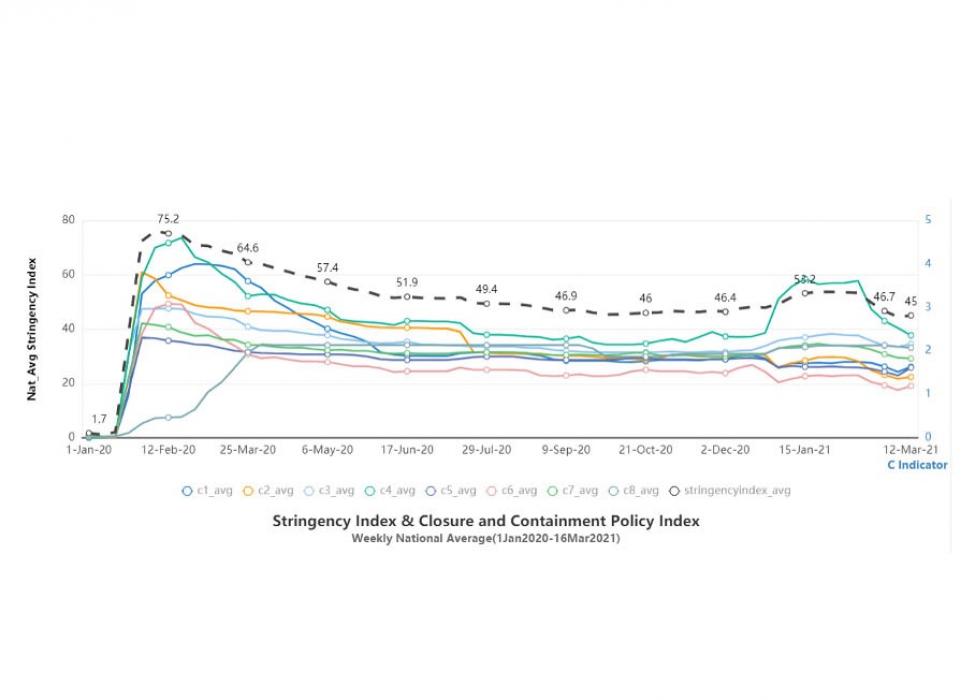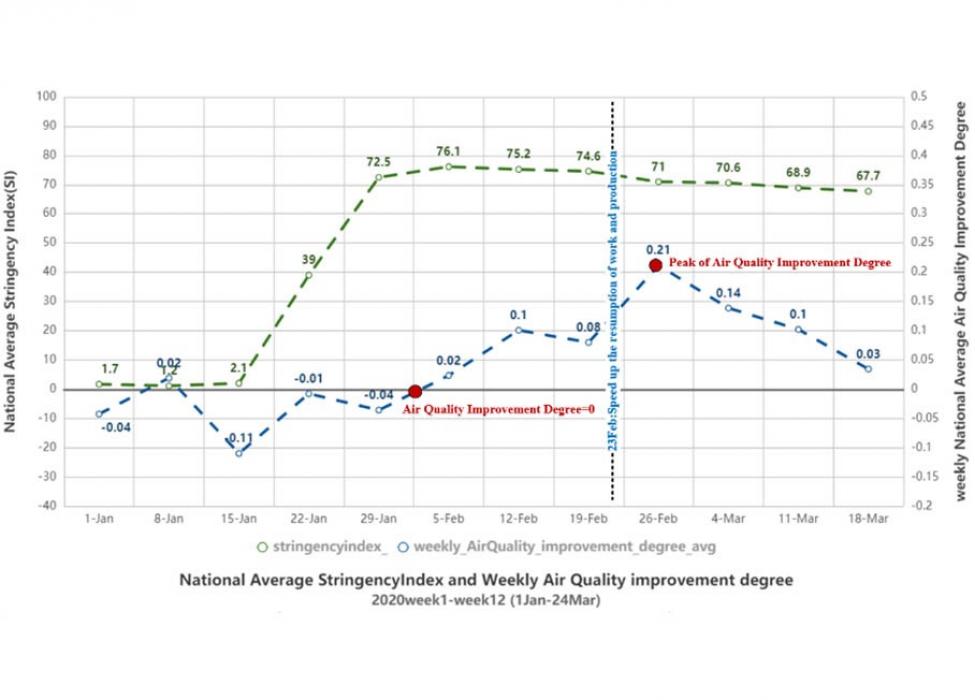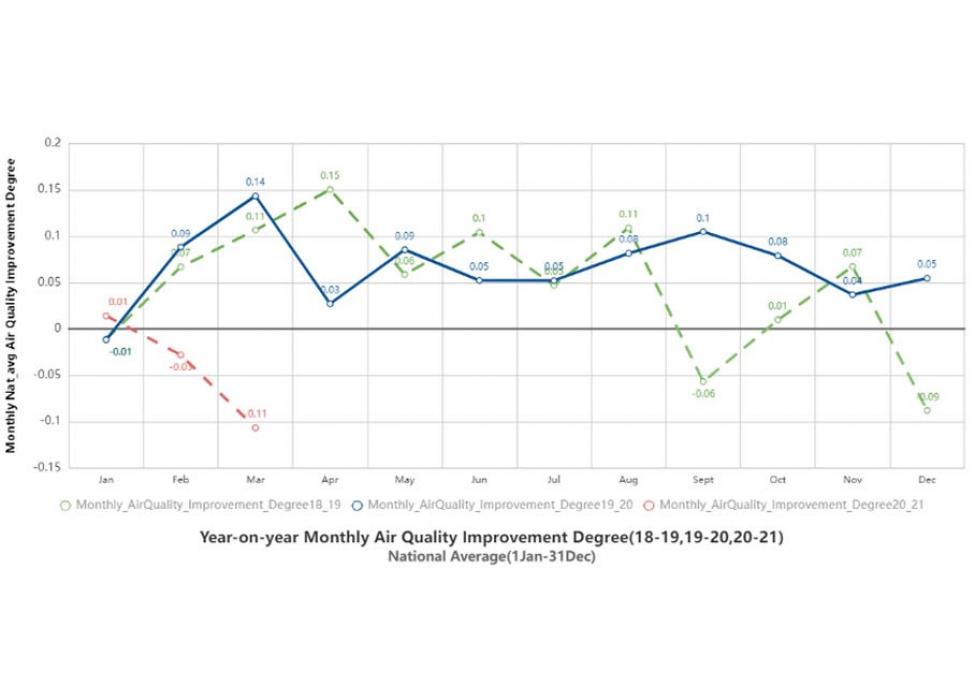The effect of lockdown restrictions on air quality in China
As the world resumes its productive activities, China's experience of a substantial improvement in air quality during lockdowns can inform future economic transformation and innovation towards more environmentally friendly solutions.

To what extent does human activity affect air quality? The restrictions on movement and activity imposed during the COVID-19 pandemic have given us a new way of looking at this topic.
Using air quality data and the Chinese subnational dataset from the Blavatnik School’s COVID-19 Government Response Tracker (OxCGRT), I looked at how lockdown restrictions may have affected air quality in China.
Since early 2020, the Chinese government imposed strict restrictions on movement: these included restrictions on all gatherings (C4≥4), the closure of schools of all levels (C1≥3), the closure of all workplaces (C2≥3), restrictions on public transport (C5≥2), and others. During Chinese New Year celebrations in both 2020 and 2021, the epidemiological situation worsened and stricter restrictions returned. The figure below gives an overview of closure and containment policies in China from the beginning of 2020 to mid-March 2021.

Figure 1. Review of closure and containment policies in China
Lockdown restrictions not only affected China’s epidemiological situation, but also air quality. The air quality index (AQI), also known as Air Pollution Index (API), is defined as a single number for reporting the air quality with respect to its effects on human health. It combines many pollutants’ concentrations to arrive to a single number for air quality. The higher the AQI is, the greater the health hazard.
The weekly Air Quality Index (AQI) in 2020 has always been less than the weekly AQI in 2019 from 5 February to 24 March, and the difference was at its highest in late February (AQI2019=148.1, AQI2020=111.1).
After controlling the first wave of the pandemic, the Chinese government started to lift workplace restrictions in late February. Since then, the AQI gap between 2020 and 2019 has continuously reduced and was at its lowest at 4.2 (AQI 2019=113.8, AQI 2020=109.6).

Figure 2. The comparison result of AQI in first quarter of 2019 and 2020
After China implemented strict closure and containment policies, the air quality became better. To indicate the degree of air pollution reduction, I calculated the “Air Quality Improvement Degree” by taking the opposite of the year-on-year change rate of AQI for two years. When the Improvement Degree is positive, it means the air in this year is better than that in last year. Air Quality began to improve from early February 2020, which is three weeks after the control policy was implemented, and remained positive until the end of February before rapidly declining. This is due to the resumption of work and production: the improvement in air quality was short-lived.

Figure 3. Correspondence between Stringency Index and Air Quality Improvement
Albeit to a lesser extent than during the start of the year, air quality remained consistently better in 2020 compared to 2019.
On the other hand, the air quality in 2021 compared to 2020 has significantly declined in the first three months of the year. This seems to indicate that, since the start of the pandemic, the gradual loosening of restrictions in 2020 and the return to normal life have almost completely restored air quality to pre-pandemic levels.

Figure 4. Year-on-year monthly AQI improvement degree
Human activity can make significant and immediate impacts on air quality, as we have seen from China. After a steep decline during the lockdown instituted at the start of 2020, air pollution slowly reverted to pre-pandemic levels as restrictions were eased and life went back to normal. This, coupled with the frequent occurrence of extreme weather in the first half of 2021, suggests that the Chinese government needs to reconsider the urgency of environmental protections in the "post-pandemic era".
For other countries and regions in the world, China’s experience is also informative: COVID-19 is changing people’s lifestyles, providing opportunities for green technology innovation, environmental observation research, and economic transformation.
Jinmeng Zhang is studying for a master's in public policy at Peking University. She is a member of the China subnational team for the Oxford COVID-19 Government Response Tracker.
The author would like to sincerely thank Dr Yuxi Zhang and Martina Di Folco for their constructive advice and invaluable support.

